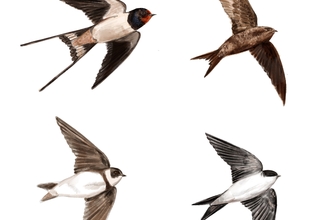It’s hard to think of a more evocative bird, its striking scream filling up the air during warm summer evenings. This iconic creature’s profile, whose anatomy has remained pretty much unchanged for about 40 million years, has been raising to popularity in the last few years, and more and more enthusiasts and researchers are dedicating their efforts to its conservation; and this is why it should be so.
I don’t know of any other creature in nature who can reach a 70mph speed and never touch the ground unless for nesting, and is able to eat, sleep, mate, and drink in flight.
Eating up to 10,000 flying insects per day including unpopular mosquitoes, these fascinating natural pest controllers have suffered an almost 70% decline in the last few decades, mainly due to insect decline, climate change, adverse weather during migration, but also due to lack of suitable nesting sites.





